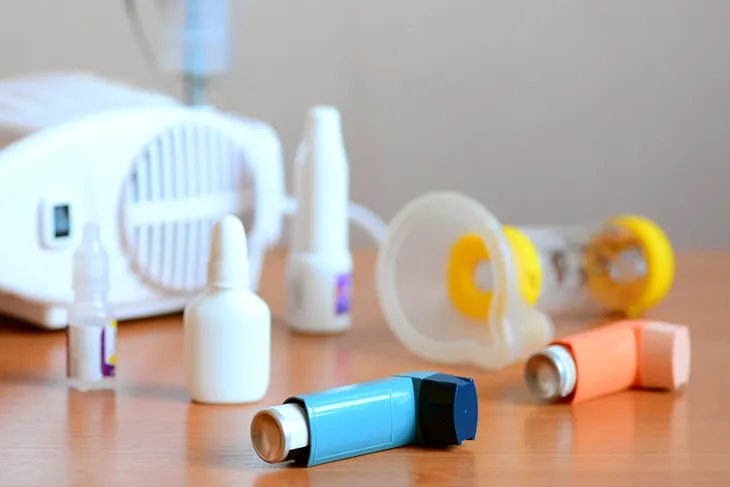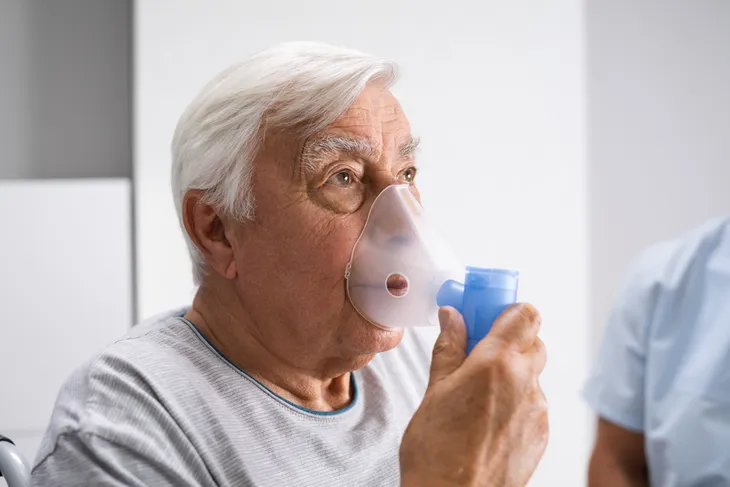Asthma is a chronic disease that causes swelling of the airways, making it more difficult to breathe. The Centers for Disease Control and Prevention reports one in 13 people in the U.S. are living with this condition. Asthmatic symptoms can range from mild to severe, and it’s potentially life threatening if a person doesn’t receive immediate treatment during an attack. A quick search online will tell you that inhalers are necessary to manage asthmatic symptoms.
There is no cure for asthma, but it can be managed using short-acting and long-acting inhalers. You can learn more about the different medications used inside these devices by searching online.
Short-Acting vs. Long-Acting Inhalers
Inhalers allow users to breathe medicine straight into the airways. Long-term inhalers prevent asthmatic symptoms and control the condition on an ongoing basis, while short-term inhalers are used to relieve sudden shortness of breath in emergency situations.
Asthmatic patients may be prescribed one or both types of inhalers depending on how frequent and severe their condition is. While there are different types of medicines that go into inhalers, there are also different types of inhaler devices.
Most Common Inhaler Devices
Pressurized Metered Dose Inhalers (MDIs)
- A pressurized device that delivers various types of medicine and brands by pressing the top of the inhaler
- Press the canister and breathe in fully for successful usage
- Small, quick to use, and easy to carry
Breath-Activated Inhalers
- Trigger a dose by breathing in at the mouthpiece
- Contains dry powder medicine
Spacer Devices
- Used with pressurized MCIs, which sits between the inhaler and the user’s mouth
- A space acts as a reservoir by holding the medicine when the inhaler is pressed
- A valve can help to ensure the medicine is kept within the spacer until you breathe it in
Nebulizers
- A machine that turns certain asthma medications into a fine mist that’s breathed in through a face mask or mouthpiece
- More commonly used in hospitals for people experiencing severe asthma attacks and require large doses of medicine
If patients are unable to MDI devices successfully, a doctor may suggest using a breath-activated inhaler or spacer device instead.
Types of Long-Acting Inhalers
Inside every inhaler device, whether it be short-acting or long-acting, is a type of medicine. Each medicine serves a purpose for people experiencing certain asthmatic symptoms. Long-acting inhalers can contain two types of medicine: bronchodilators to widen the airways and steroids to reduce inflammation.
Both medicines work to help you breathe comfortably and prevent asthma attacks over time. Since these types of inhalers take time before they begin to work, they are meant to be taken on a schedule even when you’re not experiencing symptoms.
Common steroid inhalers include:
- Asmanex Twisthaler
- Pulmicort
- Qvar
- Aerospan
- Zetonna
Common bronchodilator inhalers include:
- Atrovent (not as long-acting, used several times a day)
- Spiriva (more commonly used by COPD patients)
- Slo-Bid (muscle relaxant that opens constricted airways)
There are also combination inhalers that include both steroid and bronchodilator medicines, which may help control symptoms and reduce hospitalizations for asthma attacks. Two common types of combination inhalers are Advair and Symbicort.
Types of Short-Acting Inhalers
Short-acting inhalers are rescue medications that quickly help someone breathe when experiencing an asthma attack. They contain bronchodilators to open the airways, and can start to work within minutes after being inhaled.
Common short-acting inhalers include:
- Albuterol
- Metaproterenol
- Levalbuterol
- Pirbuterol
These types of inhalers can also be used before exercise to prevent exercise-induced asthma. If someone requires a short-acting inhaler often (more than twice a week), then control therapy with a long-term inhaler is probably necessary.
Learn More About Asthma Inhalers Online
Asthma is a chronic disease that can worsen over time. If your symptoms change or become more frequent, it may be necessary to have both a short and long-term inhaler on hand. Perhaps switching to an inhaler with both steroids and bronchodilators will be recommended by your doctor.
In addition to using inhalers, getting to know your triggers can also help you manage your asthma. Understanding which elements play a role in your asthmatic symptoms will help you know what lifestyle choices and environmental factors to avoid. Some examples of asthma triggers include tobacco smoke, dust mites, air pollution, pets, disinfectants, and mold.
Although asthma can be life threatening without having the proper medication, it is a condition that millions of people are able to manage on a daily basis. If there are any changes in your symptoms, consult your doctor. They may give you a new prescription with a different or additional inhaler to use.











